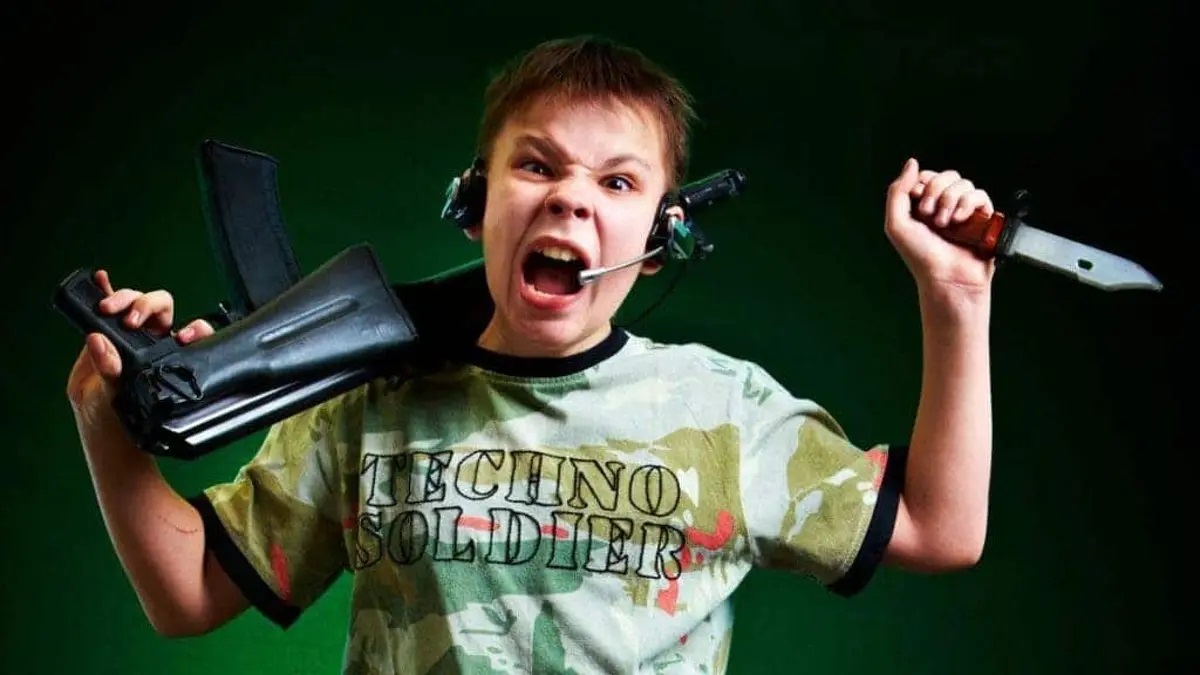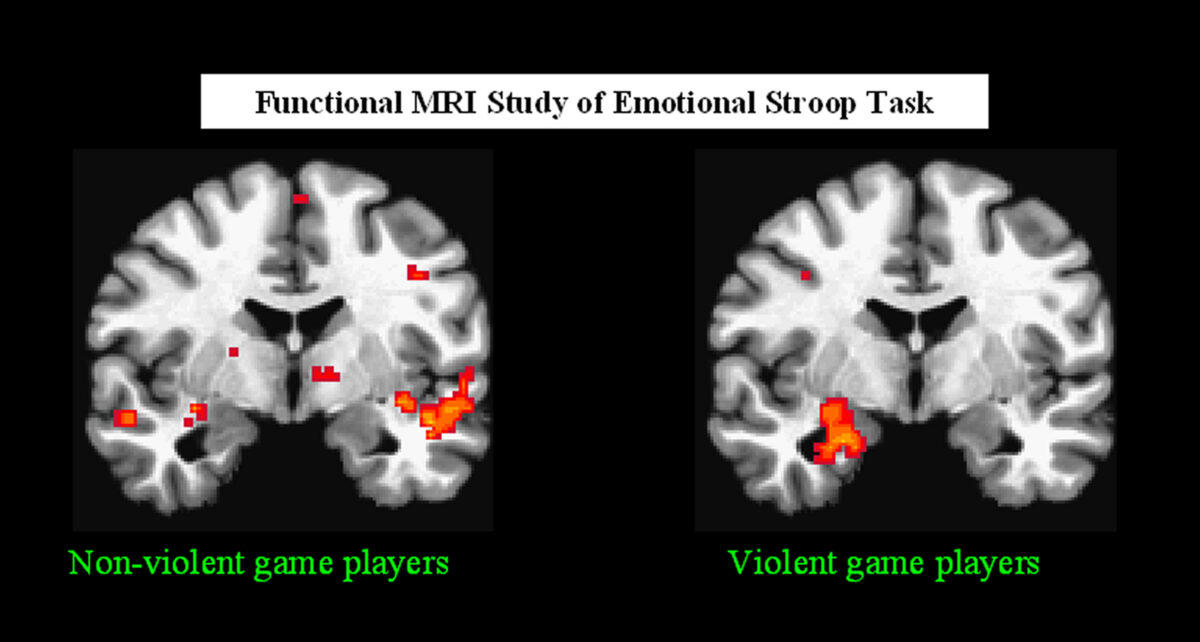How Violent Media Changes The Brain
On July 4th, 2022, a man in Illinois took to the rooftop and fired rounds of bullets on the Independence Day parade participants, killing 5 people with 2 more dying later from their wounds and injuring even more.
The man, soon identified by the police, is Robert Crimo III, aged 21.

The mass shooting devastated the close-knit community of Highland Park. Most people knew Crimo III as the son of a well-known business owner and mayoral candidate Robert Crimo Jr.
The agonizing aftermath has raised endless questions regarding the reasons and motives that led to his devastating action. Motives, however, are always complex issues interlaced with upbringing, environment, and a person’s own unique circumstances.
What is obvious is the increased trend in violent crimes committed by younger perpetrators.
The median age for those committing gun-related crimes has been decreasing, down to 35 in 2018 from 39.5 for handgun shootings. The median age is even lower for assault rifle shootings at 31 years, and just 21 years for school shootings.
From Salvador Ramos’s school shooting in Uvalde, to Robert Crimo III in Highland park, to Payton Gendron and the many other young adult and teenage perpetrators of such crimes, we find commonalities among the backgrounds of each individual.
In addition to possible behavioral problems and fatherless homes or sparse parental involvement, another similarity is the obsession with and excessive hours spent on the internet or video games, especially those containing violence.
This curious commonality begs the question of whether violent video games and internet activity could play a role in precipitating acts of such horrific violence.
Violent Media Increases Interest In Firearms
Some researchers suggest that violent media breeds an interest in violence and weaponry.
Dr. Brad Bushman once did an experiment that suggested “violent media was a risk factor for dangerous behavior around real guns.”
In the study, he split 242 children into three groups and had each group watch a video for 20 minutes.
The first group watched a Minecraft video that was violent with guns, the second watched a Minecraft video that was violent with swords, and the third group watched a non-violent video.
The children were then asked to play with toys and games in another room. The room contained two disabled handguns.
Most of the children who watched the video with guns would touch a gun, pull the trigger, and point it at one another. The group of children who watched the video with swords touched the guns less frequently while those who watched a non-violent video touched the guns the least.
From this study, Bushman suggested that “exposure to violent video games can increase a child’s interest in firearms, including shooting a handgun at themselves or others.”
However, such small game play is not going to cause a person to become a mass shooter or a perpetrator of violent crime. It is a series of complex issues that pushes a person down the path to commit violence.
Before violence comes aggression.
Learning Aggression From Violent Media
Renowned psychologist Dr. Douglas Gentile from the University of Iowa has studied violent media and aggression for over 30 years. He likens the relationship between violent media and aggressive behavior to smoking and cancer.
“It’s not a simple mechanistic thing, not like you watch a violent movie and then you go do something violent. That’s not the way this works; it’s much more subtle than that.”
“Although there are short term effects [of aggression]… the short term effects usually dissipate after about 20… 30 minutes. Just like smoking… that one cigarette does not give you cancer, and you know the effects of it do wear off after an hour or whatever, but if you continually consume it, then each one is increasing the odds of a more extreme result.”

Gentile was not too keen on linking violent media and acts of violence but acknowledged that violence is a rare endpoint of aggression.
Though some people can become aggressive, very few of them will later develop violent outbursts. It is a complex issue.
Nonetheless, aggression can be a learned behavior, trained through exposure to violent media, especially through violent video games.
Gentile defined aggression as the intent to harm, explaining that it can be physical, verbal, and cyber, among others while violence is only physical and is typically more extreme.
His years of research have since demonstrated that long-term exposure to violent media creates very subtle changes in a person’s cognitive response to aggression and violence, training a person to become more aggressive in their behavior and their thinking.
Gentile listed four main effects that are well established within the psychology research community on violent media.
“There’s first of all, what’s called an ‘aggressor effect,’ that the more entertained violence you watch, the more willing you become to behave aggressively when provoked”, Gentile said.
“The second is the ‘victim effect,’ that the more entertainment and violence you see in the media, the more you start seeing… the world as a much more dangerous and scary place.”
The third effect is the ‘bystander effect,’ meaning that we can become more desensitized and possibly even callous to the violence that has been experienced by someone else.
The final is the ‘appetite effect,’ which means that the more violent media we see the more we will want to see it. These changes in our perception also affect our cognition, on how we may respond to aggression and provocation, Gentile explained.
These effects, however, are not a one-size-fits-all as different people will experience different effects depending on the content, amount consumed, and various individual complexities.
Between the two genders, males tend to be more affected by the aggressor, bystander and appetite effects whereas females are more influenced by the victim effect.
To illustrate how violent media, especially video games, can train a person to become more aggressive, and in extreme and complex situations to become violent, Gentile described a previous research study he led with students from Singapore.
More than 3000 students were surveyed over three years on their video game use, the level of violence, length of gameplay, and also how they would respond in aggressive or provoking situations.
It was assumed that responses would reflect the underlying aggressive behavior and cognition of the students.
Aggressive cognition in the study was separate into three aspects, namely aggressive fantasy (how much one thinks about harming others), hostile attribution bias (the bias to interpret situations as hostile rather than benign), and normative beliefs about aggression (the degree of aggression in a response that a person thinks is acceptable).
Gentile found those students who played violent video games, mostly children in primary school, exhibited greater aggressive behaviors as well as all three aspects of aggressive cognition.
Gentile explained that violent video games trains the bias for hostility, as participants are waiting for violence and “are practicing being hyper-vigilant for aggression.”
Video games also reward gamers when they respond to violence with violence, consolidating this aggressive learning. Gentile argued that being exposed to other violent media also amplifies this reward process.
“Of course, the whole time you are consuming violent media, you are rehearsing along with it, aggressive fantasies, so all three of these aggressive cognitions increase among the kids who played more violent video games, and by the end of the study, those kids were being more physically aggressive.”
He gave a hypothetical scenario where a student who plays violent games gets bumped in the school hallway and how this may escalate to a fight because of the learning he or she did through gaming.

Gentile said that the hours of video game training to be vigilant for aggression can make a person interpret such an event as one of aggression or provocation rather than a simple accident.
“That tiny change in perception changes everything downstream from it.”
In games, once a player encounters an aggressive stimulus, the immediate reaction is to turn to the stimulus and respond aggressively.
“Well, the thing that humans do, especially when they’re under stress, is the thing that comes to mind first, well, the thing that comes to mind first is the thing you’ve practiced the most,” Gentile said.
The student’s immediate response may be aggression such as returning the shove or saying something unkind, however, “that’s not enough to get the kids to do it.”
“There’s kind of a high bar to doing it, because once you do, the odds that this could turn into a real fight skyrocket. But because you’ve been rewarded [in the games], and you’ve enjoyed consuming all this media violence, that bar has been lowered quite a bit,” Gentile explained, highlighting the steps that take virtual aggression to physical aggression.
However, Gentile argued that when aggressive cognition spills into daily life as aggressive behaviors, no one in the moment would connect that to violent games or violent media as the cause of such behaviors.
“Kids aren’t copying [the actions in the games]. That’s not how it works.”
“[Violent media] changes the way we perceive the world and the way we think, and we take the way we perceive the world and the way we think with us everywhere.”
Brain Differences In Obsessive Video Game And Internet Users
Studies examining the benefits of gaming have found that video gamers who play in moderation had better visuospatial skills which are trained in popular games such as Tetris. Additionally, some people can improve their decision making and social skills from action games that require teamwork and an overall fast response rate in order to win.
However, research into individuals with obsessive video game play or internet use shows that these individuals have reduced brain volume as compared to individuals who do not game or use the internet excessively.
Video game players and those that spend a long time online, have reduced grey matter (neurons) in the prefrontal areas as well as in many other areas of the brain. The prefrontal area is in charge of complex thinking, decision making, self-control, and impulse. Loss of grey matter may indicate poorer impulse control, poorer decision making, and impaired thinking.
In the short-term, violent video games have also been shown to reduce brain activation in regions responsible for emotional processes, indicating reduced empathy.
A 2006 study (pdf) of 14 adolescents demonstrated this. The researchers split the children in two groups. For 30 minutes, one group played a violent game and the other group played a car racing game.
Then, the teenagers were asked to match geometric shapes and assign an emotion to photographs of people with different facial expressions.
The researchers observed that their overall reaction times and accuracy were similar but brain scans for children who played the violent game showed reduced emotional processing when interpreting fearful and angry facial expressions.
The group playing the racing game showed robust processing patterns, activating the areas responsible for fear and risk including areas that exert control on appropriate behavior such as the anterior cingulate cortex which is responsible for empathy and impulse control as well as the areas responsible for facial expression recognition and the visual cortex.
However, in the group playing a violent game this processing was reduced and the regions responsible for empathy, impulse control, and some control of fear processing was deactivated.
Long-term gaming and prolonged internet use is unhealthy and causes long-term changes in brain matter density.
A study comparing gaming men and those who did not game found that men who gamed had a reduction of grey matter in the right posterior cingulate gyrus (motivation, top-down control of visual attention), left pre- and post-central gyrus, and right thalamus, among others.

Gamers also had reduced white matter in the left and right cingulum, a structure that helps regulate emotions and pain that is also involved in predicting and avoiding negative consequences.
Children of today are at higher risk of becoming internet and video game obsessed as they are being raised in the digital age where screen entertainment is pervasive. Over 90 percent of American children play video games.
The covid-19 pandemic also saw increases in both video game use and internet addiction as people were forced to stay at home, to work and do school work online, and used gaming and the internet as a means to keep themselves occupied.
From adolescence to adulthood, the brain’s socio-emotional regions that manage feelings and emotions mature at a faster rate than cognitive control, meaning that mental processes such as attention, decision making, and learning are affected by how exciting or social the situation is.
Studies now indicate that a person’s brain may not reach full maturation well into their 20s, with some researchers suggesting maturation does not occur until 30 years of age.
This means, prior to full brain maturation, these individuals are at a higher susceptibility to obsessive gaming.
Generally the younger the child is exposed to screen media, the easier it is for them to become susceptible to the negative aspects of both the internet and video games. Additionally, as a child gets older screen time usually increases.
At the individual level, depending on how sensitive one is to the reward mechanism and the addictive nature of games and the internet, one’s dependence on these activities will vary.
Both internet use and video game obsession draw in individuals who have harm-avoidant, anxious, and detached personalities (pdf) while simultaneously influencing users to become both antisocial and withdrawn.
How To Reduce The Risks?
Screen media permeates every aspect of our lives.
Violence and aggression, in the from of sarcasm, expletives, action, and crime, among many others, are also highly prevalent in all forms of screen media.
Compared to the time when television was the only form of screen media, it has become increasingly difficult for teenagers and young adults to exert self control over their screen media consumption and for parents to control their children’s screen time and media content.
A cohesive family with increased parental involvement and social support is related with reduced obsession, but mental health disorders and poor academic performances increase the risk.
Apart from restricting screen time and removing screen media from children’s bedrooms, Gentile encourages parents to engage in screen entertainment together with their children.
“There are four types of parental monitoring identified by the research, first is co-viewing (parents sit with their children and can comment on the media if they like)… the second is setting limits on amount… the third is setting limits on content… and then the fourth is… active mediation.”
Though co-viewing is the most common and the easiest thing to do, and “is the thing that most parents sometimes do, at least,” said Gentile.
Co-viewing however, is “actually the bad one” as it increases the negative exposure from media that contains violence.
Instead he encourages active mediation by getting parents to ask questions such as “in real life would it really work like that?… What would be the best way to handle a situation like this?”
Engaging with children to think critically about what they are seeing has been shown to seemingly “mitigate almost all of the negatives of the media,” including the violence.
Since the majority of parents only engage in passive co-viewing, this “enhances the negatives, because then you’re giving tacit approval to whatever carnage is being seen on the screen.”
To break screen entertainment habits, parents can break the pattern by eliminating the cues that prompt screen habits.
If a child’s cue is to view screen media the moment they come home, then implementing other activities at this time or in the same environment can help to break this habit.

However, it should be noted that how well an individual responds to these parental engagements and how much they need parental engagements to maintain self control over screen media usage will also vary depending on the individual. Flexible adjustments and guidance are the keys to compliance.
The Benefits Of Controlling Media Content
Gentile led another study that measured the effect of parental control on the media usage of their children.
“We asked both the kids and the parents how much their parents set what they could watch, the content limitation or when they could watch or how long they could watch what.”
At the end of the school year, Gentile and his team found that “the parents that set more limits on the amount of content… [their] kids were getting better sleep by the end of the school year, which in turn related to lower weight gain, so less risk of obesity. Those kids were getting better grades in school, were more pro-social in their behaviors as rated by teachers.”
He was very fascinated by the results, especially since the three outcomes were unrelated variables.
“Physical health, school performance, and social wellness; those three very different types of outcomes don’t usually co-occur. But there’s one simple thing of setting limits on the amount of content, influenced all of them.”
“It is a protective factor; a ripple that extends out wide across time.”
While parents may have faced daily fights over the rules at home without seeing the fruits of their labor, the real outcomes of their endeavors were improvements in the health, academic performance, and behavior of their children.
“You can’t know that your child is less aggressive than how he would have been; you only know what your kid is. You don’t know if your child is getting better grades than [he or] she would have… more pro-social…. parents… they can’t actually see the benefits.”
“So this study shows, and others [show]… that parents are in a much more powerful position than they realize.”
yogaesoteric
September 20, 2022
